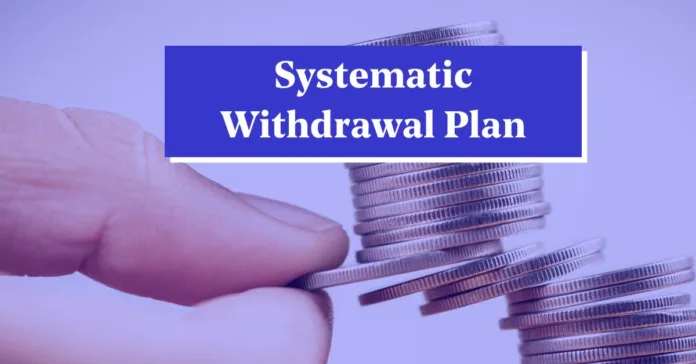Introduction: Achieving Financial Freedom with SWPs
Retirement is a phase of life where careful financial planning can make all the difference between a secure, comfortable future and one filled with financial uncertainties. As a Retirement Planning Advisor in Gurgaon, I have helped numerous clients create retirement strategies that provide steady income and keep inflation and market risks at bay. A powerful tool I recommend to retirees is the Systematic Withdrawal Plan (SWP), offering a sense of security and relief from financial uncertainties.
An SWP allows retirees to withdraw a regular income from their mutual fund investments while their capital continues to grow. In this article, I will explain how SWPs can be a crucial part of your retirement plan, offering inflation protection, tax benefits, and most importantly, control and flexibility over your financial future. Whether you are looking for financial freedom in your golden years or are a couple seeking retirement advice, understanding SWPs can help you secure your future.
What is a Systematic Withdrawal Plan (SWP)?

A Systematic Withdrawal Plan, commonly referred to as SWP, is a method that allows you to withdraw a fixed or variable amount of money from your mutual fund investments at regular intervals. This tool is especially beneficial for retirees looking for a steady income stream while ensuring that the remaining investment continues to grow.
Unlike traditional withdrawal strategies, a SWP allows clients to withdraw money periodically while a significant portion remains invested, offering the potential for long-term growth. As a Financial Planner in Gurgaon, I frequently advise my clients to consider SWPs as part of their holistic financial plan, instilling a sense of optimism and hope for their financial future.
Some key benefits of SWPs include:
- Regular Income: You get a steady income stream, which is perfect for retirees looking to meet monthly expenses without withdrawing large sums of money at once.
- Capital Preservation: Since only a portion of your funds is withdrawn, the remaining balance can continue to grow, securing your financial future.
- Inflation Hedge: The ability to adjust withdrawal amounts annually helps combat the eroding effects of inflation, especially for those seeking financial independence after retirement.
As a Personal Finance Expert in India, I emphasize that SWPs are highly customizable, allowing retirees to meet their specific financial goals with flexibility and precision.
Why SWPs are the Ideal Solution for Retirees
When planning for retirement, several factors must be considered: inflation, market volatility, and the possibility of outliving your savings. SWPs help address these concerns by providing a structured approach to withdrawals. Unlike a one-time lump sum withdrawal, SWPs allow you to pace your withdrawals, thus mitigating the risk of depleting your savings too early.
Beating Inflation with SWPs
Inflation is often a retiree’s worst enemy. With each passing year, the cost of living rises, eroding the value of your fixed income. This is where a SWP can be extremely valuable. SWPs can be structured to increase the withdrawal amount annually, matching or even exceeding the rate of inflation.
Growth Potential
SWPs enable retirees to keep their money invested in growth-oriented mutual funds, such as equity or hybrid funds. Historically, equities have offered returns that outpace inflation, making SWPs an effective way to grow your retirement corpus. As your Retirement Planning Advisor in Gurgaon, I always recommend maintaining a mix of equity and debt mutual funds to balance growth and stability.
Tax Efficiency of SWPs: A Critical Benefit for Retirees

A significant advantage of using a SWP is its tax efficiency. With the recent changes in the Union Budget 2024-25, retirees can now enjoy tax-free capital gains up to ₹1.25 lakh annually. Gains exceeding this amount are taxed at 12.5%.
How SWPs Offer Tax Benefits:
- Capital Gains Tax Efficiency:
- Equity mutual funds held for more than one year qualify for long-term capital gains (LTCG) tax benefits. With an SWP, retirees can systematically withdraw a portion of their capital gains, thereby spreading out their tax liability over multiple years. This is particularly beneficial for those who want to minimize their taxable income.
- First-In, First-Out (FIFO) Method:
- The FIFO method ensures that the oldest investments are sold first, which usually qualify for long-term capital gains tax. This minimizes the tax burden, allowing retirees to enjoy higher tax-free returns.
- Dividend Taxation Alternatives:
- SWPs also serve as an alternative to receiving dividends, which are now taxed at the marginal tax rate. SWPs offer more control over withdrawals, making it easier to optimize tax efficiency.
By strategically utilizing a SWP, retirees can keep their tax liabilities low, making it a smart financial move. This is why, as a Financial Planner in Gurgaon, I consider SWPs an indispensable part of retirement planning. If you’re ready to take control of your retirement, I encourage you to consider SWPs as a key component of your financial strategy.
Risk Management with SWPs: Balancing Growth and Stability

Retirement is not just about generating income but also about managing risks effectively. Market volatility, inflation, and unforeseen expenses like healthcare can affect your financial security. This is where SWPs shine. They provide a structured, flexible way to manage withdrawals, ensuring that your portfolio continues to grow while protecting your capital.
Bucket Strategy for Risk Management
The “bucket strategy” is a popular approach in retirement planning. This involves dividing your investments into three buckets based on different time horizons:
- Short-Term Bucket (1-3 years):
- Invested in low-risk assets like debt mutual funds or fixed deposits, ensuring immediate liquidity for expenses.
- Medium-Term Bucket (3-7 years):
- Invested in hybrid funds or conservative equity funds. This provides a balance of growth and stability.
- Long-Term Bucket (7+ years):
- Invested in high-growth equity mutual funds. Since these funds are not needed for immediate withdrawals, they can ride out market volatility and benefit from long-term growth.
This diversified approach allows retirees to meet their short-term financial needs while keeping their long-term portfolios growing. As a Personal Finance Expert in India, I always recommend this method to ensure financial security over the long term.
Tailoring SWPs for Different Retiree Profiles
One of the best aspects of SWPs is their flexibility, making them suitable for various retiree profiles. As a Financial Planner for Couples in Delhi, I work with a range of clients, from senior professionals to couples planning for early retirement. Here is how SWPs can be tailored for different needs:
For Senior Executives:
Senior executives who have accumulated substantial wealth can use SWPs to maintain their current lifestyle without dipping into their principal investments too quickly. Equity-heavy portfolios are typically recommended for maximizing growth potential.
For Couples Planning Retirement: Couples planning for retirement can use SWPs to create a regular income stream that meets their monthly expenses. They can also structure their SWPs to increase the withdrawal amount annually, thereby beating inflation. This can be particularly beneficial for those seeking financial independence after retirement.
Financial Planning for Couples in Delhi often involves finding a balance between growth and security. An SWP with a mix of equity and debt mutual funds can ensure that both partners have a reliable income stream while still growing their portfolio for future needs.
For Single Mothers or Divorced Women:
Single mothers or divorced women might prioritize stability over aggressive growth. In this case, a conservative approach using more debt-oriented funds with an SWP ensures they meet monthly expenses while protecting their savings.
Conclusion: Why SWPs Are Essential for Retirees
As the Best Financial Planner in India, I have seen the difference a well-structured Systematic Withdrawal Plan can make in a retiree’s financial life. SWPs offer retirees flexibility, tax efficiency, and a powerful way to grow their savings while generating regular income. Whether you are seeking professional advice in Gurgaon, Delhi, or anywhere else in India, an SWP can form the cornerstone of a smart retirement plan.
Financial freedom during retirement requires careful planning, and SWPs are among the most effective tools for achieving that goal. Start your retirement journey with confidence, knowing that your financial future is secure with the right strategies.
Summary of a Retirement Plan Using SWP from the Illustration
Based on the retirement plan in the provided document, let’s take a simplified yet comprehensive approach to saving, investing, and setting up a Systematic Withdrawal Plan (SWP) to ensure financial security during retirement.
1. Start Early to Build Your Retirement Corpus
Planning should begin well in advance to have a comfortable retirement. According to the illustration in the document, a plan should be initiated at the age of 40 with a goal to retire by 60 and maintain a stable financial situation until the age of 85. The key to this is regular, disciplined investments over the long term through Systematic Investment Plans (SIPs).
Based on the case illustrated, if your monthly expenses are ₹1,00,000 now, factoring in 7% inflation, you would require ₹3,86,968 per month at retirement. To achieve this, a sizeable retirement corpus of approximately ₹7.08 crore is necessary by age 60.
To bridge this gap, you need to invest systematically, starting with a SIP of ₹76,978 per month. Over 20 years, assuming an annual return of 12%, your total investment will grow significantly, reaching your required retirement corpus.
2. Accumulating Your Retirement Corpus
Here is how the retirement plan builds your portfolio over the years:
- At 41, your SIP of ₹76,978 would accumulate ₹9,82,738 in the first year.
- By the time you reach 50, your retirement corpus will be around ₹1.72 crore.
- Your corpus will have grown to approximately ₹7.08 crore by 60, which is the estimated retirement corpus needed to maintain your lifestyle and expenses.
This growth is based on the power of compounding and consistent contributions, showing the value of starting early and staying committed to your plan.
3. Transitioning from SIP to SWP Upon Retirement
Once you retire at 60, your investment strategy shifts from accumulation (SIP) to income generation (SWP). In this phase, you begin withdrawing money regularly to cover your expenses while your remaining investments continue to grow.
- In the first year post-retirement (age 61), you need to withdraw ₹46,43,621 annually, or ₹3,86,968 per month, to cover your expenses.
- Your corpus at the beginning of the year is ₹7.08 crore. After withdrawing ₹46.43 lakh for the year, your portfolio continues to grow, and by the end of the year, it reaches ₹7.41 crore, thanks to the return on your remaining investments.
This process continues, and the withdrawals increase each year to account for inflation. For example:
- At 65, you withdraw ₹60.86 lakh, and your portfolio grows to ₹8.73 crore.
- At 70, you withdraw ₹85.37 lakh, and your portfolio reaches ₹10.14 crore.
By following this approach, your investments not only cover your living expenses but continue to grow well into your 70s.
4. Ensuring Long-Term Financial Stability with SWPs
The systematic withdrawal plan ensures that your retirement corpus is not depleted too quickly. Even by the time you reach 80, despite withdrawing more than ₹1.67 crore in that year, your portfolio will still be worth approximately ₹8.21 crore.
The plan ensures that your corpus is still healthy, standing at ₹2.35 crore, by the age of 85. This approach balances regular withdrawals with continued investment growth, ensuring that your financial needs are met for the entirety of your retirement.
Also read:- How Can Your 6 Financial Decisions Help Attain a Rich, Happy, and Wealthy Life?
5. Key Takeaways for a Solid Retirement Plan
- Start Early: The earlier you start investing, the easier it becomes to accumulate the required retirement corpus.
- SIPs are Essential: Consistent monthly contributions through SIPs build your retirement corpus.
- Adjust for Inflation: Factor in inflation to ensure your future withdrawals are enough to cover rising living costs.
- SWP for Stability: Transitioning from SIP to SWP at retirement allows for a steady income while your remaining investments grow.
- Flexibility: An SWP gives you the flexibility to adjust your withdrawals based on your needs and market conditions.
By following this plan, you can ensure finance.
The author of this article, Taresh Bhatia, is a Certified Financial Planner® and advocate for female empowerment. For more information and personalized financial guidance, please contact taresh@tareshbhatia.com
He has authored an Amazon best seller-“The Richness Principles”. He is the Coach and founder of The Richness Academy, an online coaching courses forum. This article serves educational purposes only and does not constitute financial advice. Consultation with a qualified financial professional is recommended before making any investment decisions. An educational purpose article only and not any advice whatsoever.
©️2025: All Rights Reserved. Taresh Bhatia. Certified Financial Planner®
Subscribe Now for Upcoming Blogs!
[convertkit form=6555951]
📢 Join free live webinar —
Couple Finance Formula™ Register here




